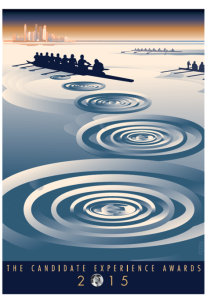
I came across this fascinating white paper from SilkRoad the other day. The Big Shift Puts Employees First: HR Transforms from Processes and Transactions to Employee Experiences, is the 2017 contribution to their annual State of Talent reports. This shines a light on how the HR tech conversation has switched from tech to employees. The paper opens with this: ”More than ever, today’s CEOs recognize the tremendous competitive advantage in a workforce that’s highly motivated, excited and tightly connected to business goals. Building a powerful workforce strategy remains front and center for HR teams.”
White papers are, by their nature, primarily marketing documents. The data are collected and analyzed in a way that put a positive light on the vendor/purveyor who commissions the study and report. There appear to be robust data behind this analysis with the use of results from 8 surveys (including one from an analyst firm), fielded throughout 2016, from1,335 respondents in HR leadership positions, It’s a vendor white paper, to be sure, but one of the more interesting I’ve seen.
The topics covered in the report include the following:
-
State of Talent Strategy
-
State of Talent Technology
-
State of the Employee Experience
-
State of Talent Acquisition and the Candidate Experience
-
State of Onboarding and the New Hire Experience
-
State of Talent Development and the Employee Experience
-
State of Analytics and Technology
-
State of HR
-
Top Five Talent Trends
Don’t let this long and timely list deter you from downloading the report: it’s a compact 30 pages full of graphics and survey data. You can read this in under 30 minutes – and you’ll be smarter for it. These are critical topics for HR leaders and professionals in all industries – all over the world.
Introducing the first chapter, The State of Talent Strategy, 4 disruptors are identified that set the stage for the interesting data and discussions that follow:
Disruptor #1: Dissatisfaction with HR Technology
Disruptor #2: Continuing pressure to improve business outcomes
Disruptor #3: Changing workforce, multiple generations
Disruptor #4: Differentiation to attract talent
And then the following chart really kicks things off:

These data points then lead the fascinating analysis and discussions that follow. Even keeping in mind that this is a marketing document, it’s extremely well done and brings to light some important (and maybe surprising) shifts in focus and strategy that leaders (not just HR leaders) are contemplating.
You may not agree with all of the conclusions. And you may not have budgets to move forward in all – or many – of these areas. But the findings are fascinating and worthy of further exploration. Download the report here and have at it.



 incredibly useful. The table of contents breaks out the data into 3 overarching categories:
incredibly useful. The table of contents breaks out the data into 3 overarching categories:






 The Era of Heightened Care and Diligence
The Era of Heightened Care and Diligence












